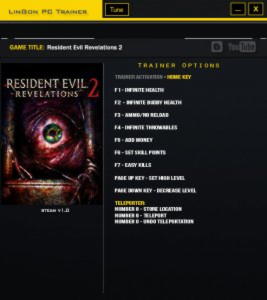

The AT should work with the appropriate administrators to ensure that parents and coaches are educated on the following aspects of concussion: prevention, mechanism, recognition and referral, appropriate return to participation, physical and cognitive restrictions for concussed athletes, and ramifications of improper concussion management. The AT should use, and educate others in using, the proper terminology of concussion and mild traumatic brain injury as opposed to such colloquial terms as “ding” and “bell ringer.” 9 Strength of Recommendation: BĢ. Disease-oriented evidence measures are intermediate, physiologic, or surrogate end points that may or may not reflect improvements in patient outcomes (eg, blood pressure, blood chemistry, physiologic function, pathologic findings).ġ. 5 These colloquial terms are antiquated, minimize injury severity, and should not be used to refer to concussion or mild traumatic brain injury.ī Patient-oriented evidence measures outcomes that matter to patients: morbidity, mortality, symptoms improvement, cost reduction, and quality of life. Notably absent from the literature and consistent with previous recommendations were the terms “ding,” “getting one's bell rung,” “clearing the cobwebs,” and other such phrases in reference to concussive injuries. 7 In evaluating and writing this document, we also included research defining concussive injuries in these terms. We recognize the strength of the definition provided by the International Concussion in Sport Group and its subpoints as valid features that further define concussion. To best assemble the available concussion research and remain consistent with other medical groups, we sought to evaluate literature that defined concussion as a “trauma-induced alteration in mental status that may or may not involve loss of consciousness.” 6 This definition was selected based on its broad application by medical organizations and widespread use within the literature from the time of the first National Athletic Trainers' Association position statement.

The document covers the topics of “Education and Prevention,” “Documentation and Legal Aspects,” “Evaluation and RTP,” and “Other Considerations.” A review of the literature supporting these recommendations has also been included.
Ages half life 2 trainer update#
Without exception, ATs should be present at all organized sporting events at all levels of play and should work closely with a physician or designate who has specific training and experience in concussion management to develop and implement a concussion-management plan based on the recommendations outlined here.Īn update to the initial 2004 National Athletic Trainers' Association position statement on the management of sport-related concussion, 5 this document contains recommendations on concussion management for practicing ATs based on the most recent scientific evidence. They are typically the first providers to identify and evaluate injured persons and are integral in the postinjury management and return-to-play (RTP) decision-making process. 4Īs licensed medical professionals, athletic trainers (ATs) receive comprehensive didactic and clinical training in concussion management. Data collected from emergency department visits show a 62% increase (153 375 to 248 418) in nonfatal traumatic brain injuries between 20, 3 with as many as 3.8 million reported and unreported sport- and recreation-related concussions occurring each year in the United States. Concussions occur in males and females of all ages and in all sports, but are most common in contact and collision activities. 2 When accompanied by clinical signs and symptoms, changes at the cellular level are commonly referred to as mild traumatic brain injury, or concussion. The sudden change in cerebral velocity elicits neuronal shearing, which produces changes in ionic balance 1 and metabolism. Concussions occur from forces applied directly or indirectly to the skull that result in the rapid acceleration and deceleration of the brain. Despite a significant increase in research dedicated to identifying and managing sport-related concussion, it remains one of the most complex injuries sports medicine professionals face.


 0 kommentar(er)
0 kommentar(er)
